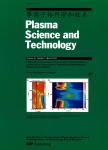The effects of radio frequency atmospheric pressure plasma and thermal treatment on the hydrogenation of TiO_(2) thin film
作者机构:New Energy Materials and DevicesCollege of ScienceDonghua UniversityShanghai 201620People's Republic of China Textile Key Laboratory for Advanced Plasma Technology and ApplicationChina National Textile and Apparel CouncilShanghai 201620People's Republic of China Magnetic Confinement Fusion Research CenterMinistry of EducationShanghai 201620People's Republic of China
出 版 物:《Plasma Science and Technology》 (等离子体科学和技术(英文版))
年 卷 期:2023年第25卷第6期
页 面:72-81页
核心收录:
学科分类:081704[工学-应用化学] 081705[工学-工业催化] 07[理学] 070304[理学-物理化学(含∶化学物理)] 08[工学] 0817[工学-化学工程与技术] 070204[理学-等离子体物理] 0703[理学-化学] 0702[理学-物理学]
基 金:financially supported by National Natural Science Foundation of China(Nos.12075054 12205040 12175036 11875104)
主 题:black TiO_(2)thin film atmospheric pressure plasma thermal treatment visible light response hydrogenation
摘 要:The effects of radio frequency(RF)atmospheric pressure(AP)He/H_(2)plasma and thermal treatment on the hydrogenation of TiO_(2)thin films were investigated and compared in this *** color of the original TiO_(2)film changes from white to black after being hydrogenated in He/H_(2)plasma at160 W(gas temperature~381℃)within 5 min,while the color of the thermally treated TiO_(2)film did not change significantly even in pure H_(2)or He/H_(2)atmosphere with higher temperature(470℃)and longer time(30 min).This indicated that a more effective hydrogenation reaction happened through RF AP He/H_(2)plasma treatment than through pure H_(2)or He/H_(2)thermal *** color change of TiO_(2)film was measured based on the Commission Internationale d’Eclairage L*a*b*color space *** TiO_(2)film displayed improved visible light absorption with increased plasma *** morphology of the cauliflower-like nanoparticles of the TiO_(2)film surface remained unchanged after plasma processing.X-ray photoelectron spectroscopy results showed that the contents of Ti3+species and Ti-OH bonds in the plasma-hydrogenated black TiO_(2)increased compared with those in the thermally treated TiO_(2).X-ray diffraction(XRD)patterns and Raman spectra indicated that plasma would destroy the crystal structure of the TiO_(2)surface layer,while thermal annealing would increase the overall *** different trends of XRD and Raman spectra results suggested that plasma modification on the TiO_(2)surface layer is more drastic than on its inner layer,which was also consistent with transmission electron microscopy *** emission spectra results suggest that numerous active species were generated during RF AP He/H_(2)plasma processing,while there were no peaks detected from thermal processing.A possible mechanism for the TiO_(2)hydrogenation process by plasma has been *** active species were generated in the bulk plasma region,accelerated in the sheath reg



